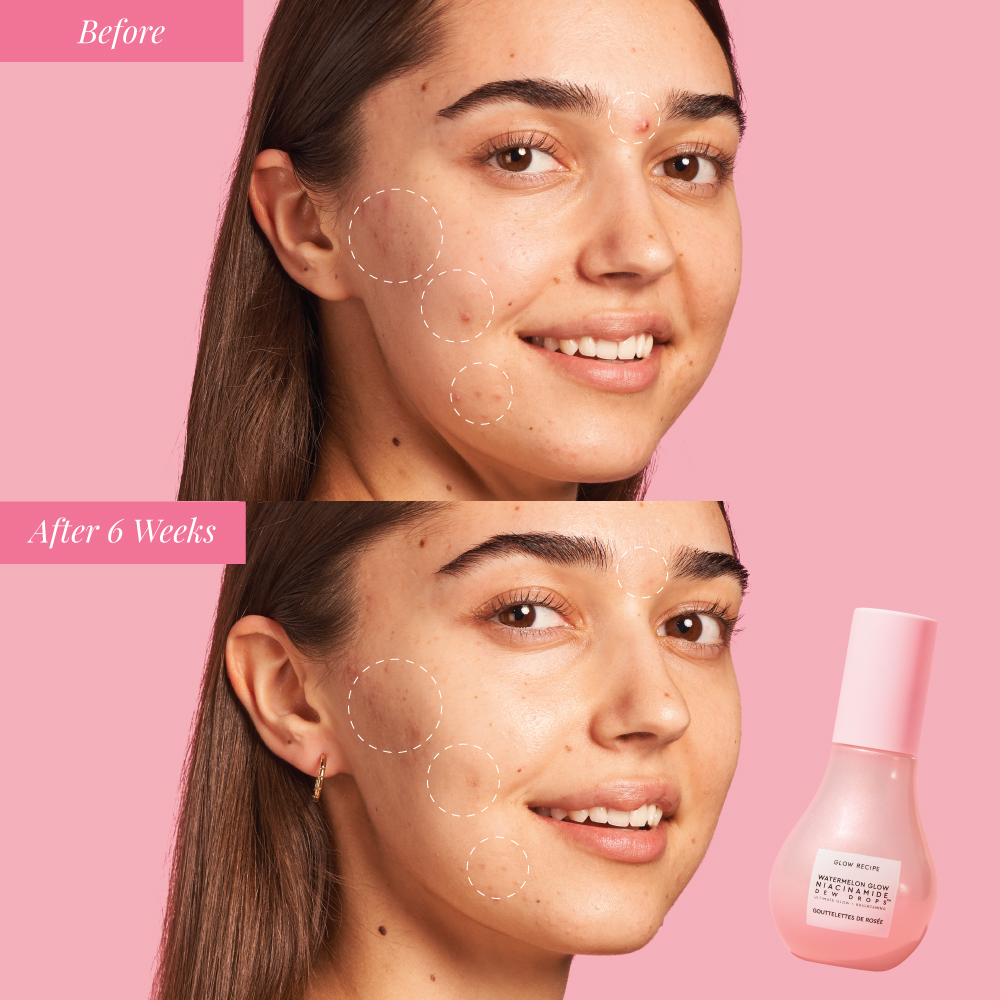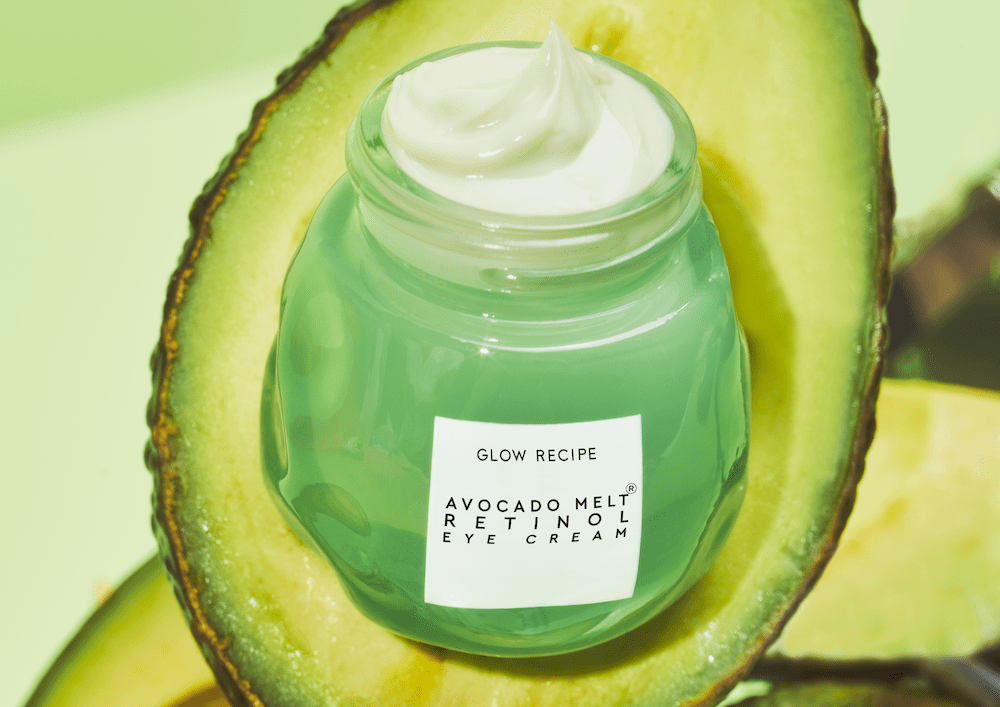Niacinamide isn’t exactly new to the skincare scene. It’s been a supporting actor for awhile — and only recently has it come into the spotlight as the headliner ingredient, as it is in our Watermelon Glow Niacinamide Dew Drops and Watermelon Glow Niacinamide Hue Drops, highlighting serums that offers legit skincare benefits and can be used as a highlighter, primer, or however you want to use it. Part of the reason for its newfound appeal? Niacinamide plays well with everything — every ingredient, every skin type, and every skin concern. Here, exactly how it pulls that off.
What is niacinamide?
Niacinamide is a form of vitamin B3 that’s essential to keep the body functioning properly. It’s in charge of facilitating hundreds of enzyme reactions throughout the body, doing everything from converting nutrients into energy to maintaining cellular antioxidant function. All to say: It’s really important.
How does niacinamide benefit skin?
Niacinamide does it all: It helps support the production of proteins in skin, strengthens the skin’s moisture barrier, improves skin tone and texture, calms inflammation, minimizes the appearance of pores, and even controls oil production. Better yet? The upside of having been around awhile is that there’s a ton of research proving these abilities.
Let’s take a closer look at how it pulls all that off. First, it serves as a potent antioxidant, neutralizing free radicals that otherwise damage collagen and cellular DNA. Niacinamide also improves skin barrier function by increasing production of ceramides, studies find — and in doing so, can reduce redness, irritation, and other forms of inflammation.
A major contributor to inflammation is glycation, caused by sugar. Read what it means for your skin.
Research also shows that niacinamide can improve the look of lines and wrinkles by kickstarting production of collagen and key proteins, such as keratin. But wait, there’s more: Niacinamide also has been shown in studies to prevent pigment from reaching the skin’s surface, thus improving hyperpigmentation (like dark spots and melasma). And last but certainly not least, research has also found that niacinamide can also balance excess sebum production. That means it can pull double-duty, addressing both the source of breakouts as well as the dark spots they leave behind.
What sets this vitamin apart is that it has a long track record in the skincare realm. Translation: There’s a ton of research to back up its efficacy. Albert Kligman, a dermatologist (and co-inventor of Retin-A, fun fact), considered the best skincare ingredients to A) be proven to penetrate skin, B) have a defined mechanism of action, and C) demonstrate specific clinical effects with continued topical use — together called the Kligman standards. In a paper published in the Journal of Clinical and Aesthetic Dermatology, niacinamide was the only ingredient out of five popular actives to meet all three Kligman standards.
Not only that, but niacinamide also offers something for every single skin condition. Whether your skin is oilier than usual or you’re dealing with redness, niacinamide can help.
How to use it in your routine
Since niacinamide is such a powerhouse, it’s worth using it in the form of leave-on products, such as toners and serums, that you can use daily — that way, you can get the most out of it. Watermelon Glow Niacinamide Dew Drops and Watermelon Glow Niacinamide Hue Drops pairs niacinamide’s many abilities with hydrating hyaluronic acid and amino acid-rich watermelon extract. It’s this pairing that makes them such clinically effective face serums in their own right, helping to even skin tone and reduce hyperpigmentation over time. They also instantly give skin a brighter, more radiant looking complexion and gives you that signature dewy glow.

In a consumer study of 32 subjects using Dew Drops, after 4 weeks, 97% agreed this product made their skin look more glowy and 94% agreed this product made their skin look brighter.
In a consumer use study of 31 participants using Hue Drops, after 4 weeks, 96% agreed it evens out skin tone and after only 2 weeks, 100% agreed it makes skin appear more glowy & hydrated.

You can also safely use niacinamide around the eyes. Thanks to its anti-inflammatory ingredients, it makes a great counterpart to retinol — and you can find both in Avocado Melt Retinol Eye Cream. The encapsulated retinol gently renews and smoothes skin, while the niacinamide works to help brighten dark circles, hydrate, and protect the delicate eye area from free radical damage. It’s a win-win.
The bottom line? Niacinamide lives up to the hype — and if you haven’t yet incorporated it into your skincare wardrobe, now’s a good time to do so.
Keep reading about the most popular ingredients and how they work:
- Why This is the Best Time to Use Retinol and BHA
- What Is Hyaluronic Acid & Why You Need It
- Vitamin C: 7 Things Everyone Needs to Know
SHOP THE LOOK
The post Niacinamide 101: Why This Ingredient Is an All-Star appeared first on Glow Recipe.
